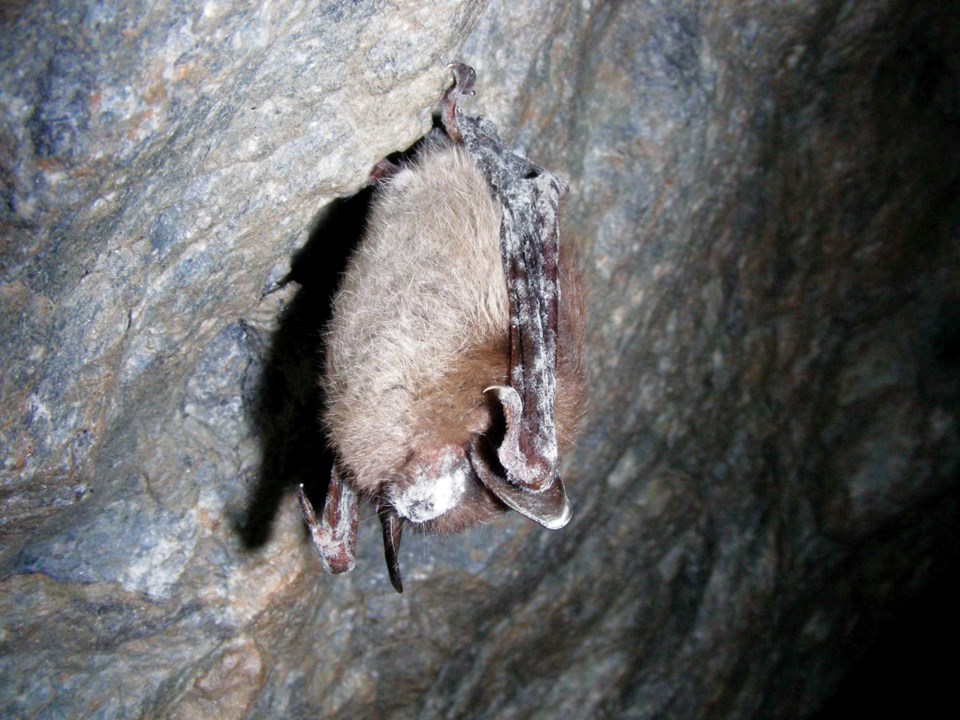B.C. bats are at risk, and researchers are again asking for the public to help. White nose syndrome (WNS), a fungal disease responsible for the death of millions of bats in eastern North America, has moved to the west coast. Confirmed just 150 km south of the B.C.-U.S. border, the presence of the fungus is very worrisome. Although devastating for bats, WNS does not affect humans.
The Sunshine Coast Wildlife Project is requesting the public’s help in monitoring the spread of WNS. A typical first sign of this disease can be bats flying during the winter, an unusual sighting at a time of year when many bats should be hibernating. Another sign is the appearance of dead bats outdoors as they succumb to the effects of the disease.
Community members are asked to report dead bats, winter bat activity, or known bat roosts, by calling 604-989-1007 or emailing [email protected]. If you find a dead bat, please report it as soon as possible. Never touch a dead bat with your bare hands. Bat carcasses will be picked up and submitted for testing and could provide the earliest indication of the presence of the disease. Reports of winter bat activity and roosts will help focus research, monitoring, and protection efforts.
Currently there are no treatments for white nose syndrome. However, mitigating other threats to bat populations and preserving and restoring bat habitat may provide bat populations with the resilience to rebound. Bat conservation efforts on the Sunshine Coast are generously supported by Habitat Conservation Trust Foundation, Forest Enhancement Society of BC, the Province of BC, Habitat Stewardship Program, Gencon Foundation, Sunshine Coast Community Foundation, and the SCRD. See www.coastwildlife.ca
– Submitted by Michelle Evelyn



